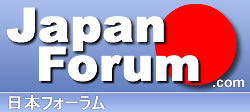
 |
The first step of learning KANJI
I think learning radicals of kanji is the nearest way to learn kanji. Because kanji is made from combination of the radicals and when you learn 3 and 5 radicals, you will get 15 (3 x 5) kanjis at most for example.
I was wrong. I have just found I had been wrong. I found the list of kanjis for each grade of elementary school defined by Japanese government. Here is the list for first grade to 4th grade.  for the full list, access this URL: 別表 学年別漢字配当表:文部科学省 In this list, look at the first 80 kanjis defined for the first grade. Most of these kanjis has no radicals or the kanji itself is recognized as the radical. Therefore, I understand it is no use to learn radicals for learning first 80 kanjis. To understand and learn these 80 kanji, refer to the table I made : First 80 Kanjis . |
For your additional information, "first grade" means age 6 to 7 in Japan. These japanese children learn 80 kanjis for one year.
For the second grade (age 7 to 8), japanese children learn 160 kanjis. But as you see in the table, those 160 kanjis are much complicate compared to the first grade kanjis. for the second grade kanjis, the "radical learning" seems to work well. |
漢字
Thank you very much for useful information, RadioKid ! ;-)
|
Thank you for your feedback.
In my list First 80 Kanjis might have some wrong part in "ON-YOMI" and "KUN-YOMI". I will keep update them. |
Kanji is pretty cool
|
I hope the links will help you.
You can download the file and learn primary Kanji.
http://www.kodomo-kotoba.info/bookle...nji1_EN_V4.pdf |
How to learn kanji
This article gives a brief introduction on kanji and offers some advice on how to learn kanji (such as by using mnemonics and learning stroke order) and list some apps to help memorise kanji.
|
A simple yet killer effective to master Kanji characters. Builds on cognitive learning, bypassing memorization: ⭐️tar ☔️mbrella ☎️elephone.
https://www.kanjihybrid.com |
Oh my... So difficult ^_^'
|
Thank you:)
|
It does seem difficult, but if you look at the larger kanji closely, you will see that they are often made up of 2, 3, or more other kanji stuck together. Though there are thousands of kanji, there are not so many basic parts to each character, and knowing what each part means can help you understand or pronounce the entire character.
like the character for "person" 人 and the character for "tree" 木, you can put them together to make a new kanji 休, which is the first part of the very "yasumi", or holiday. The character on the left is the 人 character, shortened a little bit to make it fit into the larger kanji character. Then there is 木、林、and 森。The first characters is "ki" or tree, the second is "hayashi" or woods, the last is "mori", or forest. All three use the same basic character. The smaller characters are called "radicals", though there is nothing radical about them. Every large kanji is made up of simpler kanji, most of the simple kanji will be the ones beginners learn. The stroke order for kanji is left to right, and top to bottom, and to get the kanji to look right, you must use the correct order. This comes naturally once you have learned a few hundred characters. For whatever reason, when I was learning Japanese, I had an easier time with kanji and kana than I did with grammar and speaking. But I think this was because I was able to figure out the arrangement and composition of the characters. |
Can Japanese people read KANJI actually ?
I can read all these examples correctly. |
| All times are GMT. The time now is 01:54 PM. |